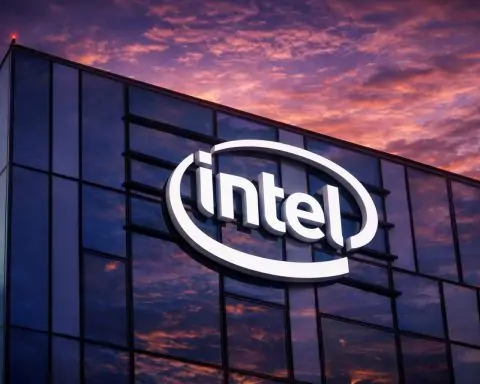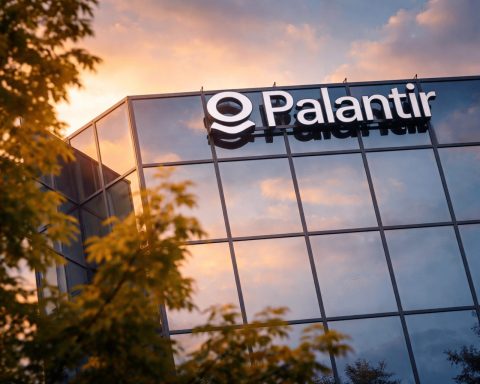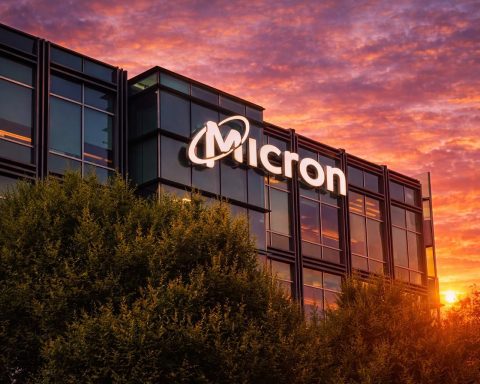- By mid-2024, Spain’s fiber broadband coverage reached 95.2% of the population, well above the EU average.
- Telefónica’s Movistar completed the copper switch-off in May 2025, with the last copper exchanges closed and fiber replacing copper nationwide.
- Movistar’s fixed fiber network reaches about 31 million premises.
- Fiber accounts for about 89.3% of fixed broadband subscriptions (16.6 million lines).
- By mid-2024, around 92% of Spain’s population was covered by 5G, with Movistar alone deploying over 10,900 5G sites by late 2023.
- An additional €1 billion was invested in 2023–24 to bring 5G to 2 million residents in towns under 10,000 people.
- The national target is 100% coverage at 100 Mbps by 2025 under the Spain Digital Agenda.
- Public connectivity funding totals €4.3 billion (2020–2025) with about €24 billion expected in private investment, plus EU NextGeneration funds of €15.4 billion for digital connectivity.
- Starlink arrived in Spain around 2021–2022, offering residential speeds from about 25 Mbps up to 150–200 Mbps with 20–40 ms latency and a one-time hardware kit cost around €300.
- Hispasat’s UNICO Rural Satellite service guarantees 100% geographic coverage and offers 200 Mbps download and 10 Mbps upload for €35 per month, with up to €600 subsidized upfront equipment and a 150 GB monthly data cap; latency is 600–700 ms.
Spain has undergone an internet access revolution in recent years. The country now enjoys extensive fiber-optic broadband and widespread 4G/5G mobile coverage, making its internet speeds among the fastest in Europe. At the same time, rural connectivity has dramatically improved, though a digital gap persists in the most remote areas. New solutions like satellite broadband (Starlink and others) are stepping in to connect those last corners. This report provides a comprehensive look at internet access in Spain – from fiber, DSL and cable networks to mobile 5G rollout, key service providers, typical speeds and prices, urban-rural disparities, satellite options, and recent government initiatives. We also examine consumer experience – including service quality, reliability, and competition among providers.
Broadband Availability and Coverage in Spain
Fiber-Optic Broadband (FTTH) is now the cornerstone of Spain’s fixed internet infrastructure. Spain boasts one of the highest fiber coverage rates in Europe: as of mid-2024, 95.2% of the population had access to fiber broadband, far above the EU average of 64% [1]. This expansive fiber network is the result of aggressive investment by both private operators and the government. Telefónica (Movistar) – the former incumbent – has led nationwide fiber deployments, alongside rivals Orange, Vodafone, and regional players. In fact, Telefónica has completely shut down its legacy copper DSL network as of May 2025, after a decade-long phase-out, replacing it entirely with fiber (the last copper exchanges closed in May 2025) [2]. With the copper switch-off completed, virtually all fixed broadband lines in Spain are now over fiber or cable – fiber alone accounts for about 89.3% of all fixed broadband subscriptions (16.6 million lines) [3].
DSL (ADSL/VDSL) once connected much of Spain, but is rapidly becoming a thing of the past. As fiber rolled out to even small towns, DSL coverage (which piggybacked on the telephone network) became less relevant. By 2024, Telefónica and other providers had migrated the vast majority of customers off copper lines. Where fiber is available, operators prefer to use it due to its far superior speeds and lower maintenance. Only a small fraction of lines still rely on DSL in the few places fiber hasn’t reached, and those are likely to be transitioned soon or served by wireless/satellite alternatives. In short, DSL coverage was nearly universal at its peak, but in 2025 fiber has effectively supplanted DSL nationwide.
Cable Broadband also exists in Spain, though it covers fewer households than fiber. Cable networks (coaxial cable, historically provided by companies like ONO which Vodafone acquired, or regional cablers like Euskaltel in the Basque Country) were significant in the 2000s. Today, however, many cable systems have either been upgraded or overbuilt by fiber. Major cable coverage is concentrated in urban areas; for example, Vodafone’s hybrid fiber-coax network passes millions of homes in cities. Cable can offer high speeds (hundreds of Mbps with DOCSIS 3.1 technology), but operators are increasingly converting these to fiber (FTTH or coax-to-the-building) to keep up with gigabit offerings. Thus, broadband coverage via cable remains available in many cities, but fiber’s reach (95%+ population) has largely overtaken cable as the primary fixed access technology [4].
Nationwide Coverage: Taken together, Spain’s fixed broadband network (fiber + cable + remaining DSL) reaches virtually all populated areas. Even many rural villages now have fiber connections. Thanks to public-private initiatives, fiber coverage in rural areas jumped to around 80% of rural households by 2023, up from just 11% a decade earlier [5]. This is a remarkable narrowing of the urban-rural divide – fiber deployment is no longer limited to cities. Urban areas enjoy near-100% coverage, while semi-rural and village areas have caught up substantially (70–80% fiber coverage and rising) [6]. For the truly remote or hard-to-reach locales (mountain hamlets, etc.), the government’s goal is to ensure at least one high-speed option is available, whether through fiber, fixed wireless, or satellite. Overall, broadband access (at ≥30 Mbps) in Spain is practically universal, and ultrafast networks (100+ Mbps) are available to the vast majority of citizens [7]. The Spanish government’s Digital Agenda set a target of 100% coverage at 100 Mbps by 2025, and the country is on track to meet or come very close to this benchmark [8].
Mobile Internet: 4G and 5G Expansion
Mobile connectivity in Spain is equally robust. All four major mobile operators have built out extensive 4G LTE networks, covering well over 99% of the population (essentially every city, town, and significant roadway has 4G signal). For most Spaniards, 4G is the baseline, providing typical download speeds in the range of 20–50 Mbps under normal conditions. Indoor coverage and rural 4G coverage have also benefited from low-frequency bands (800 MHz) ensuring broad reach. In short, 4G service is virtually ubiquitous across Spain’s territory, delivering solid mobile broadband for everyday use.
The new frontier is 5G, and Spain has been an early and enthusiastic adopter. Major operators launched 5G starting in 2019–2020, and rollout accelerated after 700 MHz spectrum was auctioned in 2021. By mid-2024, about 92% of the Spanish population was already covered by 5G signals [9] – one of the highest 5G coverage rates in Europe. This figure includes coverage achieved using a mix of bands: the broad 700 MHz band (for wide area coverage, including rural towns) and mid-band 3.5 GHz cells in urban areas. In dense cities, carriers have lit up thousands of 3.5 GHz sites to deliver the true high capacity of 5G. For example, Telefónica (Movistar) alone expanded to over 10,900 5G sites by late 2023, more than doubling its 5G cell count in one year [10]. Other providers (Orange, Vodafone) also rapidly added 5G towers [11]. As a result, Spain’s 5G now blankets most cities and towns – an impressive feat, given the EU average for 5G coverage was 89% population [12]. Notably, about 74% of the population had 5G in mid-band (3.4–3.8 GHz) coverage by mid-2024 [13], indicating that three-quarters of Spaniards could access the highest-capacity 5G service, while the rest mainly have 5G via low-band (which, while offering broader coverage, delivers more modest speed improvements).
Mobile Speeds in Spain reflect these investments. On 4G networks, users typically enjoy download speeds on the order of a few tens of Mbps, enough for HD video streaming and most apps. With 5G, peak speeds in the hundreds of Mbps are possible; however, average everyday speeds are lower since coverage is a mix of 4G/5G. According to an Opensignal report, Movistar has the fastest mobile download speed in Spain, averaging around 46 Mbps for users across its network, with Orange averaging ~39 Mbps and Yoigo ~31 Mbps (Vodafone trailed with lower averages) [14]. These figures represent the overall user experience combining 4G and 5G usage. When connected on 5G specifically, speeds can be much higher – users often see well above 100 Mbps on 5G in strong signal areas, and the average 5G download on Movistar jumped by ~55 Mbps in 2023 due to network upgrades [15] [16]. In practical terms, urban smartphone users can expect extremely smooth performance (fast downloads, 4K video streaming) on 5G, while rural users on 4G will still get decent broadband-class speeds.
Coverage-wise, urban mobile users are very well served – a recent study noted 96% of urban areas have 5G available [17]. Rural mobile coverage has also improved: even if 5G is not fully present in every small village yet, 4G certainly is, and the low-band 5G rollout (700 MHz) is explicitly targeting smaller towns. The government invested an additional €1 billion in 2023–24 to bring 5G to 2 million residents in towns under 10,000 people, further closing remaining gaps [18]. Thanks to these efforts, Spain’s urban-rural mobile divide (in terms of coverage and speed) is shrinking. In summary, mobile internet in Spain (4G/5G) is widely available and continues to improve in capacity, ensuring that even on the go or in remote areas, people have access to reasonably fast internet.
Key Internet Service Providers (ISPs) in Spain
Spain’s telecom market features a mix of large nationwide operators and numerous smaller or regional providers. After recent consolidation, there are effectively three major telecom groups dominating the market, alongside a growing field of low-cost and regional competitors:
- Movistar (Telefónica) – The former monopoly operator and Spain’s largest ISP. Movistar operates the most extensive fixed network (fiber to ~31 million premises [19]) and a leading mobile network. It offers fiber broadband, DSL (now discontinued), mobile (Movistar and secondary brand O2), and TV services. Movistar’s scale gives it near-national coverage, and it continues to invest in network upgrades (e.g. rolling out 10 Gbps fiber and 5G SA). Despite excellent infrastructure, Movistar’s consumer satisfaction is mixed (customers cite higher prices), and its rating is middling in surveys [20]. Still, Movistar is the key player with a large market share in both broadband and mobile.
- Orange Spain and MásMóvil (MasOrange Joint Venture) – In 2024, Orange (Spain’s #2 operator) and MásMóvil (a rising #4 operator) received EU approval to merge their Spanish operations into a joint venture [21] [22]. This combined entity, sometimes dubbed “MasOrange,” creates a formidable #2 competitor roughly equal in scale to Movistar. Orange had acquired Jazztel in 2015 and built a strong fiber footprint and mobile base, while MásMóvil had grown rapidly through acquisitions (Yoigo mobile, Pepephone, and regional cable providers like Euskaltel, R, Telecable). Together, the Orange-MásMóvil group now runs multiple brands – they continue to sell services under around 13 different brand names (Orange, Jazztel, Yoigo, Pepephone, Euskaltel, R, etc.) to target different segments [23]. The group owns extensive fiber infrastructure (much of it co-invested or leased from Telefónica) and mobile networks (Orange’s network plus MasMóvil’s smaller network; MasMóvil had relied on national roaming for coverage). Orange/MásMóvil now is a powerhouse with nationwide reach in both fixed and mobile. However, in customer satisfaction rankings, the legacy MásMóvil brands and Orange tend to rate below smaller providers [24] – perhaps reflecting growing pains from rapid expansion and integration challenges. The merger’s effect on prices and competition is being closely watched, as it reduces the market from four to three main network owners.
- Vodafone Spain – Long part of the big three, Vodafone has a significant presence but has faced recent challenges. In 2023, Vodafone Group agreed to sell Vodafone Spain to Zegona (a UK-based firm) in an effort to revitalize the business. Vodafone runs a sizable fixed network (largely from its acquisition of cable operator ONO) and a nationwide mobile network. It offers fiber (via its own build and wholesale access), cable, mobile, and TV. Vodafone’s network quality is solid, but it has struggled with market share and was rated the lowest among major providers by consumers in some surveys [25] [26]. The new ownership aims to make Vodafone more competitive. Notably, Vodafone has been exploring network-sharing ventures – in mid-2024 it proposed teaming up with the new MasOrange to create a shared fiber network covering 11.5 million premises, and even a smaller fiber JV with Movistar for 3.5 million premises [27]. These infrastructure collaborations suggest Vodafone is looking to reduce costs while expanding coverage. Despite its hurdles, Vodafone remains a key ISP in Spain, especially for those bundling mobile with broadband.
- Regional and Niche ISPs – Spain has an unusually large number of ISPs beyond the big players. According to one industry report, there are over 1,400 internet service providers in Spain [28]. Many of these are small local fiber companies, wireless ISPs in rural areas, or virtual operators reselling another network. For example, Parlem is a Catalan telecom operator focusing on Catalonia, Euskaltel (now under MasMóvil) historically served the Basque region, R in Galicia, Telecable in Asturias, and Adamo provides fiber in rural and semi-rural markets with competitive prices. There are also numerous MVNOs and low-cost brands – e.g. Pepephone and Yoigo (MasMóvil brands), Simyo (Orange’s sub-brand), Digi (a fast-growing Romanian-owned operator offering cheap fiber & mobile), O2 Spain (Movistar’s no-frills brand), Fi Network, Lowi (Vodafone’s low-cost brand), and more. These smaller and alternative providers often lease network capacity from the big three or operate in specific provinces. They compete aggressively on price and customer service. Notably, consumer surveys by OCU consistently find that these smaller providers – such as Pepephone, Parlem, O2, Simyo, and Digi – achieve higher customer satisfaction than the big telecom giants [29] [30]. Users appreciate their more personalized support and better value-for-money, whereas the large incumbents (Movistar, Orange, Vodafone) are often seen as costlier or less attentive.
In summary, Spain’s ISP landscape has strong national coverage by three main operators (Movistar, Orange/MásMóvil, Vodafone), but also a rich diversity of secondary providers that keep the market dynamic. This competition has driven innovative offers (such as convergent packages, low-cost fiber plans) and helps keep prices in check. Even after consolidation, consumers can choose from an array of brands and plans – from full-featured bundles with premium TV to basic budget internet-only plans – depending on their needs.
Internet Speeds and Prices in Spain
Spain enjoys fast internet speeds on average, thanks to the prevalence of fiber and 4G/5G. Fixed broadband speeds in particular are among the highest in Europe. As of 2024, Spain was noted as one of the top EU countries for ultra-fast broadband: a European report highlighted that ~79% of Spanish households are covered by networks offering 1 Gbps speeds [31]. Typical home fiber plans offered by ISPs range from 100 Mbps at the low end up to 600 Mbps and 1 Gbps for standard tiers, often with symmetrical upload/download. Some providers even market 10 Gbps fiber in select areas (for example, Digi has rolled out 10 Gbps in major cities, albeit to a niche audience). In practice, the average download speed experienced by Spanish fixed broadband users is around 100–130 Mbps [32]. An Opensignal study found that three providers (Digi, Jazztel, and Orange) were delivering average downloads of ~129–134 Mbps to their users – the fastest in the market – with even the slower major ISPs (Movistar, Vodafone) averaging ~97–103 Mbps [33]. Upload speeds average in the dozens of Mbps and can be very high on fiber (many plans now offer symmetric upload, and Opensignal measured ~98–102 Mbps average upload on the top ISPs’ networks) [34]. These figures show that Spain’s heavy investment in fiber has paid off with broadband speeds well above the EU average. For context, global speed rankings place Spain’s fixed internet among the top performers (estimates put Spain’s mean fixed download around 200 Mbps, within the top 15 countries worldwide).
For mobile data, speeds are comparatively lower but still solid. As mentioned, overall mobile download speeds average in the tens of Mbps – roughly 30–40 Mbps nationally, with up to ~46 Mbps on the fastest network (Movistar) [35]. Peak 5G speeds can reach into the few hundreds of Mbps under ideal conditions. Upload speeds on mobile are generally around 10–15 Mbps on 4G and higher on 5G (Movistar’s average upload is ~12.3 Mbps overall, or ~29 Mbps on 5G) [36]. These mobile speeds suffice for streaming HD video, video calls, and other common uses, though they don’t yet match fiber’s capabilities. It’s expected that as 5G coverage and capacity grow (and eventually 5G standalone networks launch), mobile performance will further improve.
Pricing: Internet service prices in Spain are moderate by Western European standards. A basic standalone fiber broadband package (without TV or mobile) typically costs on the order of €30–€40 per month for 100–300 Mbps service [37] [38]. Indeed, an analysis noted you can install fiber at around €30/month generally [39]. Many popular plans bundle broadband with one or more mobile lines, which usually raises the price to roughly €40–€60 per month for an inclusive package (often including unlimited mobile data or a generous allowance) [40] [41]. For example, a convergent bundle with fiber + mobile + possibly TV might be ~€50–€70, depending on speed and content. Spain’s market is very competitive on promotions: new customers frequently get discounted rates for the first 3–6 months, or added perks like free streaming service trials. As a result, savvy consumers often switch or renegotiate to keep costs down.
Comparatively, an international analysis found the average broadband cost in Spain is about $32 per month (approximately €30) [42], which aligns with the basic package pricing. This is significantly lower than in some countries (the global average is higher) and reflects the “value for money” Spanish ISPs offer due to fierce competition. It’s worth noting that most Spanish households opt for bundles (only ~10% use separate providers for different services) [43]. The common bundle includes internet, a landline, several mobile lines, and often TV. These quadruple-play bundles can run €70–€100 for top-tier ones with all premium TV channels, but many consumers are now choosing leaner bundles (e.g. skipping pay-TV) to save money [44]. Additionally, low-cost brands (Pepephone, Digi, Lowi, etc.) have driven prices down – for instance, Digi offers 300 Mbps fiber for around €25/month in some areas, and Pepephone’s 300 Mbps for ~€29/month was noted as one of the cheapest offers [45] [46].
Mobile data pricing likewise is competitive. Unlimited data mobile plans can be found for about €25–€35/month standalone, and as low as €10–€20 for moderate data (10–20 GB) plans, especially from MVNOs. Many Spanish users get their mobile service bundled with home internet, often at marginal cost (e.g. an extra €10–€15 for a mobile line with unlimited calls and plenty of data). The trend has been a rapid uptake of unlimited mobile data: as of 2025, around 35% of mobile users in Spain have unlimited data plans, and another ~39% use between 11–100 GB per month [47] – indicating heavy usage and the desire for generous plans. Despite all this, the average consumer’s combined telecom bill in Spain is still reasonable for Europe. The introduction of low-cost fiber and mobile offers has kept Spain’s internet prices “attractive” relative to many other EU countries [48].
In summary, Spaniards benefit from fast speeds at fair prices. With €30/month fiber widely available and multi-play bundles catering to families, the cost-to-speed ratio is favorable. One comparison even highlighted that the average Spanish fiber plan (around €21–€30) is much cheaper per megabit than emergent technologies like Starlink satellite, which charges about €49/month in Europe for far lower speeds [49]. This reinforces that traditional ISPs in Spain deliver strong value, thanks to infrastructure competition and regulatory policies that encourage affordable broadband.
Urban vs. Rural: Bridging the Digital Divide
Spain’s geography – with bustling modern cities and vast rural interiors – historically posed a challenge for equal internet access. In the past, a significant digital divide existed: urban areas got high-speed networks first, while many rural villages lagged on slow ADSL or even lacked broadband. However, Spain has made tremendous progress in closing the urban-rural gap in recent years.
Urban Areas: Cities such as Madrid, Barcelona, Valencia, Seville, Bilbao, Málaga and most provincial capitals now enjoy extensive fiber-to-the-home coverage (usually 90–100% of households) and comprehensive 5G mobile service. These areas often have multiple fiber providers competing – for instance, a city apartment might be passed by Movistar’s fiber, as well as Orange/MásMóvil fiber, and possibly a local provider or cable. Urban residents can easily get gigabit internet if they want; ultrafast broadband is almost a given. With dense networks, urban internet speeds are very high and reliability is strong. Consequently, digital services, remote work, and streaming are as accessible in Spanish cities as anywhere in the world. The urban internet penetration is essentially saturated, and nearly all households that want internet have subscribed (internet usage in cities is around 95%+ of households) [50]. For mobile, city dwellers benefit from capacity upgrades (like additional 5G small cells) ensuring that even crowded downtown areas have solid performance.
Rural Areas: Spain’s rural zones – from farming villages on the plains of Castile to remote hamlets in mountainous regions – were once on the wrong side of the digital divide. As recently as 2016, only about 18% of rural households had access to broadband >=30 Mbps, versus ~90% in urban areas [51]. But fast-forward to 2023–2025, and the picture has dramatically changed. Through a combination of private investment and government-subsidized programs, fiber-optic lines now reach deep into rural Spain, raising rural high-speed coverage to roughly 80% of rural homes by 2023 [52]. The Spanish government prioritized this in its national broadband plans (PEBA and successor programs), often using EU funds to incentivize operators to build in smaller municipalities. Data shows a steady climb in rural FTTH: from only 11% coverage in 2013 to 50% by 2019, then 72% in 2022, and hitting 80% in 2023 [53]. This means the majority of villages now have fiber available (or at least very nearby). Additionally, 4G mobile coverage in rural areas is essentially complete, providing a safety net of at least basic internet even where wired options are lacking.
Remaining Challenges: Despite this progress, there is still a tail end of truly remote locales – the “last 5%” or so – where laying fiber is costly and thus hasn’t happened yet. These include isolated farmsteads, mountain hamlets, or islands with very few people. In such areas, residents until recently might have been stuck with sub-10 Mbps DSL or even no broadband. Spain has tackled this with alternative technologies: fixed wireless access (radio links) and satellite broadband. Several wireless ISPs (WISPs) operate in rural regions, installing radio antennas that deliver 30–100 Mbps to homes from a central tower. Moreover, the government launched the UNIVERSAL Broadband Access subsidy (part of programs like UNICO Rural) to ensure even the most remote can get online. Under a scheme active since 2021, any household in an eligible underserved area can get a voucher (around €400) towards installation of a broadband solution of at least 30 Mbps [54] [55]. This was initially used for satellite services at 30 Mbps, and now for newer satellite options at higher speeds.
The net effect is that the digital divide has narrowed to a historically low level. According to Spain’s Ministry of Economic Affairs, by mid-2024 the gap between urban and rural coverage for fast broadband (100 Mbps) had fallen considerably, with the aim of eliminating it by 2025 [56]. Investments continue to flow: Spain’s Recovery and Resilience Plan earmarked €15.4 billion for digital connectivity, focusing heavily on rural and remote areas [57]. EU NextGeneration funds (via the UNICO program) subsidize fiber backbones, 5G towers in rural zones, and novel projects to reach the hardest spots [58] [59].
Impact on Rural Communities: Already, the improvements are palpable. Many small towns that five years ago had only basic ADSL now boast fiber at 100 Mbps or more, enabling residents to enjoy Netflix, telework, e-learning, and cloud services like their city counterparts. Businesses in rural tourism or agriculture can use IoT and online marketing thanks to better connectivity. Of course, some challenges remain: in the roughly 15-20% of rural homes still without high-speed coverage, there is a reliance on interim solutions (4G routers or satellite links), which often come with higher latency or data caps. Additionally, even where physical connectivity exists, digital literacy and uptake can lag – some older rural residents might not subscribe to internet even when available. The government is addressing this via digital inclusion programs and emphasizing the importance of bringing not just infrastructure but also skills to rural populations.
In summary, Spain’s urban-rural digital divide has significantly diminished. Urban areas continue to have a slight edge in terms of multiple provider choices and ultra-dense 5G, but rural Spain is no longer offline: the majority of villages are connected to fiber or are in reach via wireless/satellite, fulfilling the country’s vision of 100 Mbps for all. The few remaining gaps are targeted by upcoming projects and by innovative satellite services as described next.
Satellite Internet Options: Starlink, Hispasat, and More
To reach the last pockets without terrestrial broadband, satellite internet has become an important option in Spain. Both international and domestic satellite services are now available, offering high-speed connectivity from the sky:
- Starlink (SpaceX) – Elon Musk’s Starlink service has been a game-changer for many rural areas globally, and Spain is no exception. Starlink’s constellation of low Earth orbit (LEO) satellites became available in Spain around 2021–2022. It offers download speeds between ~25 Mbps up to 150–200 Mbps (varying with network load) and latency around 20–40 ms – far better latency than traditional satellites [60]. This makes Starlink capable of supporting video calls, streaming, and general broadband use even in remote locales. Pricing in Spain for Starlink has evolved; as of 2024, the service costs roughly €40–€50 per month for a standard residential plan, plus a one-time cost of about €300 for the hardware kit (dish + router) [61]. (Starlink’s prices have been lowered in some European regions as subscriber numbers grew – one anecdote in 2023 noted Starlink in Spain at ~€40/month [62], though around €50 is a typical figure across Europe.) Compared to Spanish fiber offerings, Starlink is more expensive and slower – e.g. the average EU fiber plan costs only ~€21 and often offers gigabit speeds [63]. Because of this, Starlink is not aimed at urban or suburban customers who can get cheaper fiber. Instead, it’s targeted at those “countryside and remote” users where no good fixed line exists [64]. For them, Starlink can be a lifesaver: it delivers true broadband where previously there was perhaps 5 Mbps DSL or nothing at all. However, the uptake in Spain is limited to these niches; with such extensive fiber and 4G coverage, Starlink is not seen as a competitive threat to traditional ISPs in Spain at this time [65]. As one European telecom official put it, “If I can get fiber, I will take fiber… If I don’t have good broadband by traditional means, then great, I’ll have satellites” [66]. That sentiment sums up Starlink’s role: a valuable fallback for the unserved, but otherwise a premium solution. It’s worth noting Starlink’s presence has spurred some action – for instance, it offers a truly universal coverage (100% of Spain’s territory, even mountaintops) which pushes local providers to not ignore remote customers.
- Hispasat / UNICO Satellite Broadband – Spain’s own satellite operator, Hispasat, has launched a new initiative to ensure 100% coverage. In collaboration with the government’s UNICO Rural Demand program and operators like Eurona and eNUK, Hispasat provides a subsidized satellite internet service across Spain. The current offering (since 2022–2023) uses the Hispasat 36W-1 and Amazonas satellites with Ka-band spot beams over Spain. Under this program, any user in an area without 50 Mbps terrestrial service can subscribe to a 200 Mbps download, 10 Mbps upload satellite connection for just €35 per month [67] [68]. The upfront installation and equipment cost – which is around €600 for the satellite dish and modem – is fully subsidized (free for the user) via a €600 government subsidy [69] [70]. There is no long-term contract required, making it accessible and risk-free for rural consumers [71] [72]. This program, sometimes branded as “Conectar por satélite” or simply the UNICO satellite service, guarantees 100% geographic coverage of Spain [73]. Even the smallest hamlet can now get a 200 Mbps link via this scheme. The trade-offs: being a geostationary satellite, latency is high (around 600–700 ms ping) [74], which is noticeable in interactive applications (e.g. online gaming is problematic, real-time videoconferencing may have a delay). Also, there is a fair use data cap of 150 GB per month, after which the speed may be throttled or de-prioritized (the service isn’t cut off, but heavy users could see slower speeds at peak times beyond 150 GB) [75]. For typical web, email, and moderate streaming, 150 GB is sufficient, but it’s a limit to be aware of. Despite these limits, the Hispasat service is a game-changer for rural connectivity: at €35, it’s affordable (the government deliberately capped the price around this level [76] [77]), and it matches entry-level fiber speeds (200 Mbps) for downloads. Importantly, this offering brings Spain closer to that 100% 100-Mbps coverage goal – even if fiber can’t physically reach a location, satellite will ensure no one is left with dial-up speeds.
- Other Satellite Providers: Before Starlink and the new Hispasat service, there were satellite broadband options in Spain via operators like Eutelsat’s Konnect or Viasat/EuroBroadband. These typically offered around 30 Mbps plans, often through retailers like Eurona, at prices around €40–€60/month. They served as a stopgap for some rural users but suffered from high latency and strict data caps. Now, with the advent of the subsidized 200 Mbps Hispasat offering, those older services (30 Mbps at €39.90, etc. [78]) are likely to be phased out or upgraded, since the new solution is superior in speed and cost. Another future player could be OneWeb (another LEO satellite constellation) or Amazon’s upcoming Project Kuiper, but as of 2025 those are not yet providing service in Spain. For now, Starlink remains the primary LEO option, and Hispasat/Eurona’s geostationary service is the primary subsidized option. It’s interesting to note that Spain’s approach – subsidizing a domestic satellite capacity – is somewhat unique and has been recognized as helping meet EU broadband targets [79].
In conclusion, satellite internet in Spain has transitioned from a niche last-resort to a strategic component of nationwide coverage. Starlink brings a cutting-edge, albeit costlier, solution for remote users wanting lower latency, while Hispasat’s program ensures affordability and ubiquity at the expense of latency. Consumers in truly disconnected areas now have multiple choices for getting online, whereas a few years ago they had none. The presence of these satellite options reinforces Spain’s commitment that no corner of the country will be left offline, complementing the terrestrial networks.
Government Initiatives and Regulatory Efforts
The Spanish government and regulators have played a crucial role in the expansion and improvement of internet infrastructure. Several key initiatives and policies are worth noting:
- Spain Digital Agenda & Connectivity Plan: In 2020, Spain approved its national digital strategy (España Digital 2025), updated in 2022, which set ambitious connectivity goals in line with the EU’s Gigabit society targets. Chief among them was the commitment to “guarantee 100 Mbps coverage for the entire population by 2025” and close the urban-rural gap [80]. To achieve this, the government launched the Plan for Digital Infrastructures and Connectivity and a 5G Promotion Strategy in late 2020 [81]. These plans outlined coordinated actions: public funding for rural broadband, spectrum allocation for 5G, streamlining permits for fiber deployment, and encouraging infrastructure sharing. The plans are backed by significant funding – €4.3 billion in public funds (2020–2025) for connectivity, plus an expected €24 billion from private investment [82]. Additionally, Spain’s recovery plan from the EU (NextGenerationEU funds) dedicated €15.4 billion to digital connectivity projects to ensure no regions are left behind [83]. This influx of funding via programs like UNICO Banda Ancha (for rural broadband) has directly resulted in new fiber to villages and subsidies for solutions like the Hispasat satellite service [84] [85]. The European Commission’s 2024 report on the Digital Decade actually praised Spain’s progress, highlighting the country’s “coverage well above the European average” in both fixed high-capacity networks and 5G, thanks to these investments [86].
- Spectrum and 5G Support: Spain’s regulator and government moved early on 5G. They held spectrum auctions in mid-bands (3.5 GHz) and in 2021 auctioned the 700 MHz band, ensuring operators had the frequencies needed for wide 5G coverage. The government also provided incentives: for example, they extended 700 MHz license durations to 40 years and temporarily reduced spectrum fees to encourage rapid 5G rollout [87]. These policy measures lowered the cost barrier for telcos to deploy 5G in less profitable areas. The state also directly funded certain 5G pilot projects and use-cases (smart agriculture, remote driving, etc.) to stimulate demand. By lowering taxes and offering long license terms, Spain made 5G investment more attractive, contributing to the high 5G coverage (92% pop) achieved [88].
- Universal Service and Affordability: Spain has updated its Universal Service Obligation (USO) for broadband over time. A few years ago, it introduced a USO guaranteeing at least 1 Mbps to every citizen, later raising it to 10 Mbps. With the latest push, effectively the goal is 30 Mbps+ for all (although not enshrined as a formal USO at 100 Mbps yet, the combination of subsidies achieves a similar outcome). Additionally, the government monitors broadband prices and offers subsidies to low-income or at-risk groups if needed (e.g., there have been social tariffs for telephone and discussions of one for broadband). The competitive market, however, has kept retail prices relatively “attractive” by EU standards [89], so Spain hasn’t faced a major affordability crisis on broadband pricing.
- Regulatory Oversight (CNMC): The National Commission for Markets and Competition (CNMC) regulates telecom to ensure competition and investment. It has imposed rules on the incumbent (Telefónica) to open its networks in certain areas. Notably, Telefónica’s fiber network is subject to wholesale access in areas deemed non-competitive (smaller towns), allowing alternative ISPs to lease fiber lines (via the NEBA wholesale platform) and offer service, which has spurred the proliferation of local ISPs. In the most competitive urban areas, these obligations were relaxed to encourage infrastructure competition. The CNMC also approved in 2021 a shorter notification period for copper switch-off, allowing Telefónica to accelerate copper decommissioning from a 5-year to 2-year notice [90]. This regulatory move was significant – it let Telefónica speed up fiber-only transitions, thereby improving customers’ service quality sooner and saving energy (Telefónica noted fiber is 90% more energy-efficient than copper) [91]. The CNMC’s balancing act aims to foster a competitive yet future-proof market: it supported the Orange-MásMóvil merger under EU review, likely with conditions to ensure that MVNOs can still thrive (the EU’s conditional approval of the merger required certain concessions to smaller operators) [92]. Through these actions, regulators are shaping a market where a few big players coexist with many small ones, and where network upgrades are not held back by legacy rules.
- Recent Developments: In late 2023 and 2024, Spain’s telecom sector saw a wave of consolidation and partnerships. We discussed the Orange-MásMóvil joint venture (a major development in 2024) which aims to invest heavily in networks (the new combined company announced over €700 million for infrastructure in Andalusia, for example [93]). Another development is the acquisition of Vodafone Spain by Zegona (completed in early 2024), which the government approved as part of reinvigorating the sector [94]. These moves indicate a period of restructuring: companies are joining forces to achieve scale and share network costs, potentially leading to more efficient deployment (e.g. shared fiber networks) but also raising some concerns about reduced competition. The Spanish government has an interest in maintaining competition (to keep prices low and quality high), so any consolidation comes with scrutiny. For instance, as part of merger approvals, competitors like Digi have been given opportunities to buy surplus fiber networks or spectrum to enhance their position, ensuring consumers still have choices.
- Quality of Service and Consumer Protection: The government and regulatory bodies also focus on service quality. The Ministry and CNMC track coverage and speed stats closely. There are initiatives like the ONTSI (National Observatory for Telecommunications) that publish data on broadband uptake and quality. Consumer protection laws in telecom are strong – contracts are regulated, there are penalties for unjustified price hikes, and users can switch providers with one-day number portability for mobile and a simplified process for broadband. Spain also launched a Digital Rights Charter in 2021 and related observatories [95] [96], which, while broader than just telecom, emphasize citizens’ rights to connectivity and protection online. All these efforts contribute to an environment where internet access is treated as a critical, well-regulated utility, with the state actively ensuring it is available, affordable, and reliable.
In essence, Spain’s government initiatives have been a linchpin in its internet success story. Through substantial funding, clear strategic targets, and prudent regulation, Spain not only built one of Europe’s most expansive fiber and 5G networks, but did so while promoting competition and innovation. The results – high coverage, fast speeds, and falling digital divides – underscore the positive impact of these policies [97].
Service Reliability, Customer Satisfaction, and Competition
Having fast networks and wide coverage is one side of the coin; the end-user experience in terms of reliability and satisfaction is the other. In Spain, the general quality of internet services is high – modern fiber and mobile networks tend to be reliable and capable – yet customer satisfaction varies widely depending on the provider and customer service.
Network Reliability: Fiber-optic technology has proven very reliable in Spain’s context. Unlike the old copper lines that were prone to interference and degradation, fiber connections rarely suffer outages except in cases of accidental cable cuts or power issues. Operators routinely report high uptimes; for instance, Orange Spain achieved top marks in a “Consistent Quality” metric (82.6% in an index measuring the proportion of time users get good performance) [98], and it also shared a Reliability award with its sub-brand Jazztel [99]. These metrics indicate that the vast majority of the time, Spanish broadband users have a stable connection suitable for demanding applications. Even under heavy usage (multiple streams, video calls), the fiber networks hold up well, evidenced by Spain’s strong showing in streaming and gaming experience stats [100] [101]. Mobile networks, too, have become more consistent; call drops are infrequent and data connectivity is generally steady. Movistar was noted to lead in a mobile Consistent Quality measure (~79.6%), slightly ahead of Orange [102]. This implies roughly 4 out of 5 tests on its mobile network met high-performance thresholds, which is a positive outcome for wireless tech. Of course, rural wireless users might see more variability (due to signal fluctuations or capacity limits), but overall, Spain’s internet infrastructure is considered reliable and modern.
Customer Satisfaction: When it comes to how customers feel about their providers, the picture is mixed and tends to correlate with customer service and pricing rather than pure network performance. Surveys by the consumer organization OCU reveal that smaller and regional providers often outrank the big incumbents in satisfaction [103]. For the second year in a row, OCU’s large survey (13,000 users) in 2024 found Parlem and Pepephone were top-rated for both mobile and home internet services [104] [105]. These are relatively smaller companies – Parlem focuses on Catalonia and Pepephone is a low-cost brand under MásMóvil – yet they scored highest due to factors like responsive customer support, transparent billing, and delivering on promised speeds. Other well-reviewed providers included O2 (Telefónica’s sub-brand) and Digi and Simyo, all of which got positive nods from consumers for value and reliability [106] [107]. On the flip side, the survey indicated Vodafone and Movistar received lower ratings from consumers, and Orange/MásMóvil also fell behind the leaders in satisfaction [108] [109]. Common complaints with the big providers involve higher prices, aggressive upselling or complicated TV bundles, and customer service difficulties (like longer resolution times for issues). It’s notable that 84% of Spanish households now use fiber [110], so differences in satisfaction are less about technology (most have fiber) and more about the service surrounding it.
One reason smaller ISPs excel is their niche focus and simplicity. Many do not force long contracts or pricey bundles, and they often use the larger networks (via wholesale agreements) but layer on better customer care. For example, Pepephone famously had a philosophy of no binding contracts and a promise to lower your price if the tariff for new customers dropped – policies that resonate well with consumers. Parlem, being local, provides Catalan-language support and a community feel, which earned loyalty in its region. In contrast, a giant like Movistar, while technically excellent in network terms, can feel less personal and more expensive (though Movistar has tried to address this by launching O2 as a “no-frills” option, which indeed scores well). Euskaltel and Fi Network were among those that scored lower on mobile satisfaction [111], showing not all smaller brands are equal – some MVNOs may have limitations or issues too (Fi Network, for instance, had some customer service hiccups during rapid growth).
Competition and Consumer Choice: Spain’s telecom market is characterized by competition on multiple levels. At the top, the three infrastructure-based groups (Movistar, MasOrange, Vodafone) compete vigorously – especially for high-value customers and in converged services. This competition has led to frequent promotions and a continual upgrade of offerings (e.g. doubling fiber speeds or adding more mobile data at no extra cost to retain customers). However, critics worry that with the reduction from four to three big players (post Orange-MásMóvil merger), competition could soften. To counter this, regulators and the presence of many MVNOs keep some pressure on the big three. The fact that over 1,400 ISPs operate in Spain [112] means consumers nearly everywhere have at least an alternative available, even if it’s a small local ISP. In practical terms, if a customer is unhappy with one provider, they can often switch to another that uses the same fiber line (thanks to wholesale access rules) or a different network altogether. Number portability and easier switching have made the market fluid – millions of mobile and broadband customers change provider each year in Spain, chasing better deals. This churn pushes operators to improve their offers and service.
Service Quality Issues: While overall reliable, things are not perfect. There have been instances of outages – for example, a major Movistar outage in 2022 affected parts of Spain for a day, and occasionally fiber cuts disrupt local service until repaired. Storms can knock out power to mobile towers causing temporary mobile blackouts (especially on islands or rural zones until generators kick in). Nonetheless, these instances are relatively rare and usually quickly resolved. Spanish consumers do report high usage of customer support lines, often related to billing or contract questions rather than technical faults. The regulator CNMC tracks complaints per operator; historically, the big three have higher complaint ratios, while some smaller ones have fewer complaints (possibly due to smaller customer bases and better satisfaction).
Emerging Trends in Satisfaction: An interesting trend is that as more people get unlimited mobile data and very fast fiber, expectations are rising. What was “great speed” a few years ago is now standard, so providers are starting to differentiate via content (like including Netflix or fútbol packages) or via customer experience. There’s a push for better Wi-Fi coverage in homes – many ISPs now include mesh Wi-Fi systems or advanced routers, since customers judge their “internet” by how it works on Wi-Fi. There’s also emphasis on convergence: one reason some consumers stick to the big players is to get all services (mobile, internet, TV) on one bill with premium content. But as noted, a segment of consumers is now dropping pay-TV from bundles and using OTT streaming services, which could reduce the lock-in big telcos enjoyed.
Competition Outlook: The competitive landscape in Spain remains one of the most dynamic in Europe. The consolidation will be a defining factor – with Orange+MasMovil, the market share of the top 3 becomes quite evenly split. Movistar is around 40%, MasOrange near 34%, Vodafone ~20% in various segments (figures vary by mobile vs fixed). There are worries that prices could creep up if the big players act less aggressively. However, the strong showing of Digi (which has grown rapidly, reportedly signing up many customers with its low prices and even winning the Download Speed award in tests [113]) and others shows that challengers can still disrupt the market. In fact, Digi’s expansion and the continued success of Pepephone/O2 have forced the incumbents to introduce “value” offers to compete.
From the consumer perspective, Spain’s internet users generally benefit from the competition – they have access to high-tech networks and a range of pricing options. The main complaints – slow customer service response, billing complexity, or the occasional outage – are not unique to Spain, but Spanish consumers are vocal (and have OCU and other organizations advocating for them). As of 2025, around 72% of users said they were satisfied or very satisfied with their mobile internet service (according to a year-end 2024 user survey) [114], and satisfaction with home internet was slightly lower but still a solid majority. These numbers will likely improve as fiber reaches everyone and as providers sharpen their customer care to retain users.
In conclusion, service reliability in Spain is high thanks to modern infrastructure, and competition among providers is intense, yielding benefits like lower prices and choice. While the big brands don’t always top customer satisfaction charts, the presence of many alternative providers means consumers can find a service that suits their priorities – whether it be rock-bottom price, top-notch support, or comprehensive bundles. The Spanish internet landscape in 2025 is one where the average user gets fast, reliable connectivity and has more options than ever in how they receive it, which is a strong indicator of a healthy, mature market.
Conclusion
Spain’s journey in expanding internet access has turned it into a European leader in connectivity. Virtually overnight in historical terms, Spain built out one of the continent’s largest fiber-to-the-home networks, reaching over 95% of its people [115]. This has propelled average broadband speeds into the hundreds of Mbps and enabled the digital transformation of Spanish society. At the same time, the country embraced mobile broadband – ubiquitous 4G and rapid 5G rollout now put ultra-fast mobile internet in the hands of users across both cities and countryside. Crucially, Spain did not neglect its rural heartland: through proactive policies and funding, it has dramatically shrunk the digital divide, bringing high-speed links to places once thought too remote.
As of 2025, a Spaniard in a tiny village can videoconference or stream movies thanks to fiber or a satellite dish, nearly as easily as a Madrid resident on gigabit fiber. Satellite options like Starlink and Hispasat’s 200 Mbps service fill in the last gaps, ensuring 100% coverage is not just a slogan but a reality on the ground. Meanwhile, robust competition among a plethora of providers keeps prices relatively affordable (around €30–€40 for common plans) [116] [117] and services innovative. The Spanish government’s continued investments and modern regulatory stance have fostered this environment where private telecom companies race to offer better deals and newer tech – such as multi-gigabit fiber, nationwide 5G, and beyond.
There are, of course, ongoing challenges: the consolidation of operators needs to be balanced so consumers don’t face higher prices or reduced choices; customer service levels and satisfaction with the big telcos have room to improve; and digital literacy must match digital availability, especially for older or rural populations. However, the overall trend is very positive. Internet access in Spain is no longer about haves and have-nots – it’s about how much faster and better it can get for everyone. With plans for even more advanced infrastructure (like edge computing nodes, IoT networks, and eventually 6G on the horizon), Spain is well-positioned to remain at the forefront of connectivity.
In summary, Spain’s internet access boom is a story of successful broadband policies, intense provider competition, and rapid technological adoption. From blazing-fast fiber in apartments to 5G signals on remote roads and satellites linking mountain farms, Spain has built a digital network that reaches practically every citizen. As the country moves forward, the focus is likely to shift from simply expanding access to enhancing the quality and equality of the digital experience – ensuring that all Spaniards can fully leverage these connections for economic, educational, and social benefit. Given the strides made so far, Spain’s example offers valuable lessons on how a combination of public ambition and private enterprise can deliver world-class internet infrastructure in a short time.
Sources:
- European Commission Digital Decade Report – Spain (2024) [118] [119]
- Opensignal Spain Fixed Broadband Experience Report (Sept 2024) [120] [121]
- Opensignal Spain Mobile Network Experience (Jan 2024) [122] [123]
- Onivia/Nae “Closing the Digital Gap” Spain FTTH study (2023) [124]
- DatacenterDynamics – Telefónica completes copper switch-off (May 2025) [125] [126]
- Politico Europe – Starlink vs European Broadband (Feb 2025) [127] [128]
- eNUK (UNICO Rural Satellite Service details) [129] [130]
- InSpain News – OCU survey on best providers (Mar 2025) [131] [132]
- Idealista News – Broadband price overview (May 2021) [133] (pricing context)
- World Population Review – Internet cost by country 2024 [134].
References
1. www.lamoncloa.gob.es, 2. www.datacenterdynamics.com, 3. www.datacenterdynamics.com, 4. www.lamoncloa.gob.es, 5. onivia.net, 6. onivia.net, 7. digital-strategy.ec.europa.eu, 8. digital-strategy.ec.europa.eu, 9. www.lamoncloa.gob.es, 10. www.opensignal.com, 11. www.opensignal.com, 12. www.lamoncloa.gob.es, 13. www.telecompaper.com, 14. www.opensignal.com, 15. www.opensignal.com, 16. www.opensignal.com, 17. www.telecompaper.com, 18. www.lamoncloa.gob.es, 19. www.datacenterdynamics.com, 20. inspain.news, 21. www.reuters.com, 22. www.opensignal.com, 23. www.opensignal.com, 24. inspain.news, 25. inspain.news, 26. inspain.news, 27. www.opensignal.com, 28. www.opensignal.com, 29. inspain.news, 30. inspain.news, 31. www.politico.eu, 32. www.opensignal.com, 33. www.opensignal.com, 34. www.opensignal.com, 35. www.opensignal.com, 36. www.opensignal.com, 37. www.idealista.com, 38. www.idealista.com, 39. www.idealista.com, 40. www.idealista.com, 41. www.idealista.com, 42. worldpopulationreview.com, 43. inspain.news, 44. inspain.news, 45. www.idealista.com, 46. www.idealista.com, 47. inspain.news, 48. www.politico.eu, 49. www.politico.eu, 50. ec.europa.eu, 51. www.sciencedirect.com, 52. onivia.net, 53. onivia.net, 54. www.hispasat.com, 55. www.hispasat.com, 56. digital-strategy.ec.europa.eu, 57. digital-strategy.ec.europa.eu, 58. digital-strategy.ec.europa.eu, 59. digital-strategy.ec.europa.eu, 60. www.politico.eu, 61. www.politico.eu, 62. news.ycombinator.com, 63. www.politico.eu, 64. www.politico.eu, 65. www.politico.eu, 66. www.politico.eu, 67. www.enuk.es, 68. www.enuk.es, 69. www.enuk.es, 70. www.enuk.es, 71. www.enuk.es, 72. www.enuk.es, 73. www.enuk.es, 74. www.enuk.es, 75. www.enuk.es, 76. www.lyntia.com, 77. www.advanced-television.com, 78. www.hispasat.com, 79. www.advanced-television.com, 80. digital-strategy.ec.europa.eu, 81. digital-strategy.ec.europa.eu, 82. digital-strategy.ec.europa.eu, 83. digital-strategy.ec.europa.eu, 84. digital-strategy.ec.europa.eu, 85. www.enuk.es, 86. www.lamoncloa.gob.es, 87. digital-strategy.ec.europa.eu, 88. www.lamoncloa.gob.es, 89. www.politico.eu, 90. www.datacenterdynamics.com, 91. www.datacenterdynamics.com, 92. ec.europa.eu, 93. www.opensignal.com, 94. www.csimagazine.com, 95. www.lamoncloa.gob.es, 96. www.lamoncloa.gob.es, 97. www.lamoncloa.gob.es, 98. www.opensignal.com, 99. www.opensignal.com, 100. www.opensignal.com, 101. www.opensignal.com, 102. www.opensignal.com, 103. inspain.news, 104. inspain.news, 105. inspain.news, 106. inspain.news, 107. inspain.news, 108. inspain.news, 109. inspain.news, 110. inspain.news, 111. inspain.news, 112. www.opensignal.com, 113. www.opensignal.com, 114. www.telecompaper.com, 115. www.lamoncloa.gob.es, 116. www.idealista.com, 117. worldpopulationreview.com, 118. www.lamoncloa.gob.es, 119. www.lamoncloa.gob.es, 120. www.opensignal.com, 121. www.opensignal.com, 122. www.opensignal.com, 123. www.opensignal.com, 124. onivia.net, 125. www.datacenterdynamics.com, 126. www.datacenterdynamics.com, 127. www.politico.eu, 128. www.politico.eu, 129. www.enuk.es, 130. www.enuk.es, 131. inspain.news, 132. inspain.news, 133. www.idealista.com, 134. worldpopulationreview.com










